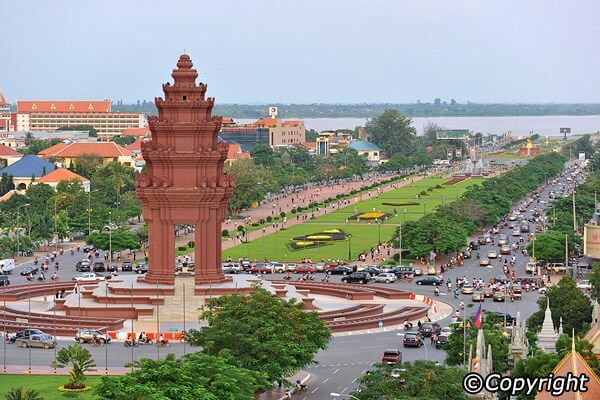
The biggest city and the capital of Cambodia, Phnom Penh is situated in the south central region of this country, on the bank where Tonle Sap river flows into Mekong river providing natural resources and fresh water to this city. The name “Phnom Penh” derived from Wat Phnom Daun Penh meaning “The temple on hill” established by miss Daun Penh – a rich relict. And Phnom Penh is the sixth capital of Cambodia after many times relocating capital. The climate of this city is similar to Ho Chi Minh’s climate in Viet Nam with 2 seasons in year: rainy season and dry season with the average temperature in year is high so tourists usually visit this city at the time from November to February the following year when temperature are lower. With the area of 678,5 square kilometres, Phnom Penh is an important political – cultural – social – economic center with many buildings and constructions are influenced by French architecture and Khmer’s identities having historical beauty. Exotic shopping, unique dining and bustle nightlife are interesting chances tourists can’t help to refuse when visting this beautiful city.